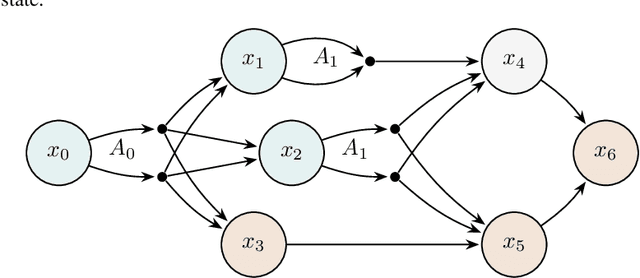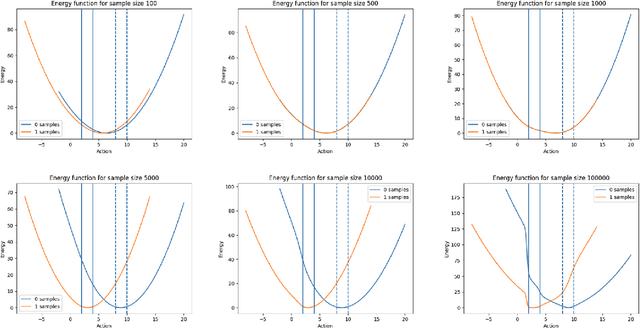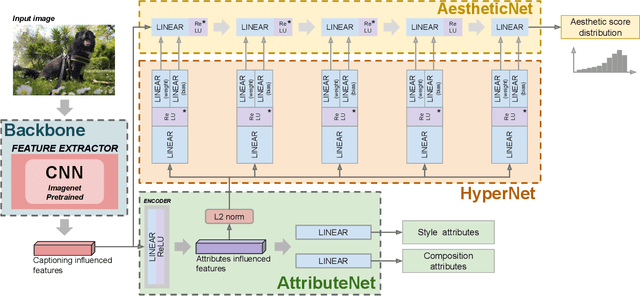Marco Leonardi
A Primal-Dual Online Learning Approach for Dynamic Pricing of Sequentially Displayed Complementary Items under Sale Constraints
Jul 08, 2024



Abstract:We address the challenging problem of dynamically pricing complementary items that are sequentially displayed to customers. An illustrative example is the online sale of flight tickets, where customers navigate through multiple web pages. Initially, they view the ticket cost, followed by ancillary expenses such as insurance and additional luggage fees. Coherent pricing policies for complementary items are essential because optimizing the pricing of each item individually is ineffective. Our scenario also involves a sales constraint, which specifies a minimum number of items to sell, and uncertainty regarding customer demand curves. To tackle this problem, we originally formulate it as a Markov Decision Process with constraints. Leveraging online learning tools, we design a primal-dual online optimization algorithm. We empirically evaluate our approach using synthetic settings randomly generated from real-world data, covering various configurations from stationary to non-stationary, and compare its performance in terms of constraints violation and regret against well-known baselines optimizing each state singularly.
A survey and taxonomy of loss functions in machine learning
Jan 13, 2023



Abstract:Most state-of-the-art machine learning techniques revolve around the optimisation of loss functions. Defining appropriate loss functions is therefore critical to successfully solving problems in this field. We present a survey of the most commonly used loss functions for a wide range of different applications, divided into classification, regression, ranking, sample generation and energy based modelling. Overall, we introduce 33 different loss functions and we organise them into an intuitive taxonomy. Each loss function is given a theoretical backing and we describe where it is best used. This survey aims to provide a reference of the most essential loss functions for both beginner and advanced machine learning practitioners.
Maximum entropy exploration in contextual bandits with neural networks and energy based models
Oct 12, 2022


Abstract:Contextual bandits can solve a huge range of real-world problems. However, current popular algorithms to solve them either rely on linear models, or unreliable uncertainty estimation in non-linear models, which are required to deal with the exploration-exploitation trade-off. Inspired by theories of human cognition, we introduce novel techniques that use maximum entropy exploration, relying on neural networks to find optimal policies in settings with both continuous and discrete action spaces. We present two classes of models, one with neural networks as reward estimators, and the other with energy based models, which model the probability of obtaining an optimal reward given an action. We evaluate the performance of these models in static and dynamic contextual bandit simulation environments. We show that both techniques outperform well-known standard algorithms, where energy based models have the best overall performance. This provides practitioners with new techniques that perform well in static and dynamic settings, and are particularly well suited to non-linear scenarios with continuous action spaces.
Composition and Style Attributes Guided Image Aesthetic Assessment
Nov 08, 2021



Abstract:The aesthetic quality of an image is defined as the measure or appreciation of the beauty of an image. Aesthetics is inherently a subjective property but there are certain factors that influence it such as, the semantic content of the image, the attributes describing the artistic aspect, the photographic setup used for the shot, etc. In this paper we propose a method for the automatic prediction of the aesthetics of an image that is based on the analysis of the semantic content, the artistic style and the composition of the image. The proposed network includes: a pre-trained network for semantic features extraction (the Backbone); a Multi Layer Perceptron (MLP) network that relies on the Backbone features for the prediction of image attributes (the AttributeNet); a self-adaptive Hypernetwork that exploits the attributes prior encoded into the embedding generated by the AttributeNet to predict the parameters of the target network dedicated to aesthetic estimation (the AestheticNet). Given an image, the proposed multi-network is able to predict: style and composition attributes, and aesthetic score distribution. Results on three benchmark datasets demonstrate the effectiveness of the proposed method, while the ablation study gives a better understanding of the proposed network.
 Add to Chrome
Add to Chrome Add to Firefox
Add to Firefox Add to Edge
Add to Edge